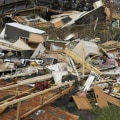When it comes to emergency preparedness, having an emergency response team (ERT) in place is essential. ERTs are groups of people who are trained and equipped to respond to emergency incidents, such as natural disasters, security threats, public health crises, or other potential business disruptions. The ERT is responsible for creating, implementing, updating and maintaining an appropriate plan of action for responding to the seven stages of emergency response. It's important to note that the number of staff needed to staff the emergency response team will depend on the size and complexity of the incident.
Additionally, ERT members are full-time staff who have other functions within the organization, but are armed and trained to respond to violent encounters.
Stage I: Exploration of Weather Conditions
The first stage of the emergency response process involves exploring the weather conditions in order to assess the risk and make informed decisions. This includes compiling vehicle inventory, refilling all gas tanks, scheduling trips, and providing emergency vehicles to the Emergency Coordination Center (ECC).
Stage II: Risk Assessment and Decision-Making
The second stage involves assessing the risk and making decisions based on the information gathered in Stage I. This includes providing the ERT with telephone lists of emergency calls for members of the administration and cabinet, as well as preparing login and logout lists for use by members of the ERT and by faculty, staff and administrator volunteers.
Stage III: Effective Communication
The third stage focuses on effective communication between members of the ERT.
This includes providing clear instructions on how to respond to an emergency situation, as well as ensuring that all members are aware of their roles and responsibilities.
Stage IV: Implementation of Pre-Established Action Plan
The fourth stage involves implementing a pre-established action plan in order to ensure that all necessary steps are taken in order to respond effectively to an emergency situation. This includes providing medical care and emergency services, as well as counseling and spiritual outreach.
Stage V: Monitoring and Registration Points
The fifth stage involves monitoring and registering points in order to track progress during an emergency situation. This includes keeping track of all personnel involved in the response process, as well as any equipment or supplies that may be needed.
Stage VI: Counseling and Spiritual Outreach
The sixth stage focuses on providing spiritual counseling to everyone involved during minor emergencies, major emergencies and disasters. This includes providing emotional support and guidance during difficult times.
Stage VII: Medical and Emergency Care
The seventh stage involves providing medical care and emergency services in order to ensure that everyone involved is safe and secure.
This includes providing first aid, administering medications, transporting patients to medical facilities, and providing psychological support. It's important for organizations to take the time to prepare their ERT for any potential disaster. The Federal Emergency Management Agency (FEMA) found that 20% of businesses didn't spend time maintaining their emergency plans and that 40 to 60% of small businesses never reopen their doors after a disaster. The harder you work to prepare your ERT, the more likely it is to prove effective during a disaster.






